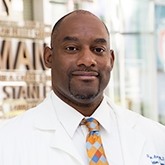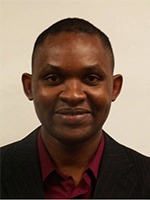Program Information
Diversity and Inclusion in Medical Physics

B Curran
S Avery
W Ngwa
P Hammer
D Chew
T Ngoma
R Alfonso-Laguardia
E Higginbotham
B Curran1*, S Avery2*, W Ngwa3*, P Hammer4*, D Chew5*, T Ngoma6*, R ALFONSO-LAGUARDIA7*, E Higginbotham8*, (1) Virginia Commonwealth University Medical Center, Richmond, VA, (2) University of Pennsylvania, Sicklerville, NJ, (3) Harvard Medical School, Boston, MA, (4) American Institute of Physics, College Park, MD, (5) No information provided (6) Muhimbili University of Health and Allied Sciences, Dar Es Salaam, TA, (7) Cuba, (8) Perelman School of Medicine, Philadelphia, PA
Presentations
7:30 AM : Welcome - B Curran, Presenting Author7:35 AM : Definition of D&I/AAPM efforts (Stephen Avery/Will Ngwa) - S Avery, Presenting Author
7:50 AM : Increasing Access to Medical Physics Education and Research Excellence (AMPERE) - W Ngwa, Presenting Author
8:05 AM : D&I in Physics - P Hammer, Presenting Author
8:20 AM : D&I in NIH - Funding/Research - D Chew, Presenting Author
8:35 AM : D&I in Global Health - T Ngoma, Presenting Author
8:50 AM : D&I in Global Health - R Alfonso-Laguardia, Presenting Author
9:05 AM : Pathway to developing D&I program at AAPM - E Higginbotham, Presenting Author
WE-AB-204-0 (Wednesday, August 3, 2016) 7:30 AM - 9:30 AM Room: 204
Many efforts have been made to increase diversity in the science workforce. In order for us to be competitive in innovation and ingenuity we need to reach out to any source of intellectual talent. Having greater diversity can only increase the creativity in medical physics. In order for students to succeed academically they need role models and mentors with whom they can identify. Literature has shown that racial and ethnic diversity has both direct and indirect positive effects on the educational outcomes, career advancement and motivation of students. Diversity not only focuses on race, ethnicity and gender, but it can also include socioeconomic status, sexual orientation and more. Underrepresented populations have had low numbers over the years not only in medical physics but also in the sciences in general. With the rapidly changing face of our country we need to address how we attract and train the next generation of scientists to stay competitive. It is necessary to examine the role that diversity and inclusion play in the long term goals of institutions, workplaces and classrooms. To increase innovation we must engage people from all walks of life with different perspectives and life experiences to solve the problems that we will face. Diversity should be viewed as a strategy to achieve our goals instead of acts of good citizenship. Many of today's businesses and corporations have discovered that embracing diversity prepares future leaders in today’s global market.
This lecture will provide insight to how differences within our society can drive innovation. We will provide an overview of the role diversity and inclusion plays in the clinic, education and research to develop the future workforce in medical physics.
Learning objectives:
1. Understanding the role diversity and inclusion plays in medical physics.
2. The importance of developing education and research strategies for a global workforce.
3. How to develop a roadmap to diversity excellence within AAPM.
Funding Support, Disclosures, and Conflict of Interest: W. Ngwa, No
Handouts
- 115-32162-387514-120111.pdf (S Avery)
- 115-32163-387514-118920.pdf (W Ngwa)
- 115-32165-387514-120107.pdf (D Chew)
- 115-32166-387514-120108.pdf (T Ngoma)
- 115-32167-387514-120109.pdf (R Alfonso-Laguardia)
- 115-32168-387514-120110.pdf (E Higginbotham)
Contact Email:








